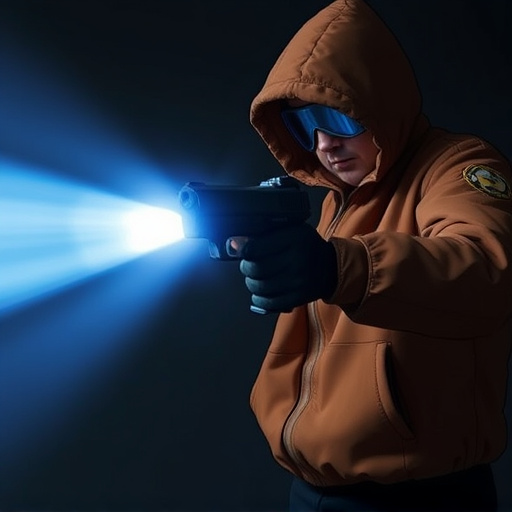Rechargeable stun gun batteries' performance, effectiveness, and longevity hinge on choosing between lithium-ion (high power, shorter lifespan) and NiMH (longer life, lower power). Voltage and amperage also matter—higher voltage penetrates clothing better, while higher amperage delivers a stronger shock. For optimal 'do stun guns work through clothing' performance, wear thin fabrics like silk or rayon to maximize current flow, ensuring powerful jolts and extended runtime.
“Discover the secrets behind rechargeable stun gun batteries and their impact on performance. This comprehensive guide delves into the key specifications that matter, ensuring you make an informed choice. Learn how clothing can affect the effectiveness and battery life of your stun gun, with insights on whether these devices truly work through layers. Understanding these factors is crucial for personal safety and peace of mind.”
- Understanding Rechargeable Stun Gun Batteries: Key Specifications
- How Clothing Affects Stun Gun Effectiveness and Battery Life
Understanding Rechargeable Stun Gun Batteries: Key Specifications
Rechargeable stun gun batteries are a key component that determines the device’s performance and longevity. When considering a stun gun, understanding its battery specifications is crucial for ensuring its effectiveness. One important factor to note is the battery type; typically, these devices use lithium-ion or NiMH (Nickel-Metal Hydride) rechargeable cells. Lithium-ion batteries offer higher energy density, making them lighter and more powerful, while NiMH batteries are known for their longer life cycle but generally have lower energy output.
Additionally, the voltage and current ratings are significant. Higher voltage can penetrate clothing more effectively, ensuring the stun gun does its job regardless of the target’s resistance. Current, measured in amperage (A), determines the intensity of the shock delivered. A higher current rating means a stronger jolt. Remember, these specifications directly impact the stun gun’s ability to subdue an assailant, so choosing the right battery is essential for personal safety and the device’s overall performance.
How Clothing Affects Stun Gun Effectiveness and Battery Life
Stun guns, while powerful tools for self-defense, see their effectiveness and battery life influenced by an often-overlooked factor: clothing. The material and thickness of one’s clothing can significantly impact how well a stun gun delivers its jolt. Thin fabrics like silk or rayon allow the electrical current to pass through more easily, ensuring maximum shock potential. In contrast, thicker materials such as denim or leather can act as a barrier, reducing the intensity of the stun and potentially shortening battery life.
When considering the ‘do stun guns work through clothing’ question, it’s crucial to understand that while some fabrics allow for better conductivity, others can deaden the effect. Clothing acts as an insulator, which may disrupt the direct path of the electric charge. This can result in a weaker shock, particularly against individuals wearing multiple layers or dense fabrics like heavy winter coats. As such, users should be mindful of their attire when relying on a stun gun for protection, aiming to maximize both its stop-power and runtime by selecting appropriate clothing that facilitates optimal current flow.
Rechargeable stun guns offer a convenient and cost-effective alternative to traditional batteries, with key specifications like voltage, current, and capacity playing crucial roles in their performance. Understanding how these batteries interact with clothing is essential, as it can significantly impact both the stun gun’s effectiveness and its battery life. When considering a stun gun, remember that proper fit and material choice can affect whether it will effectively disrupt an attacker, ensuring your safety.
